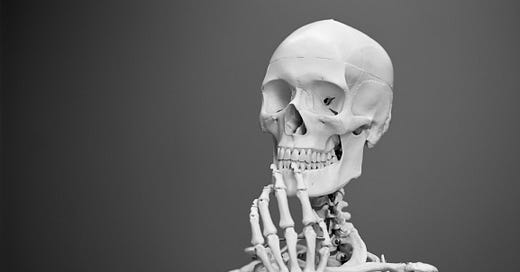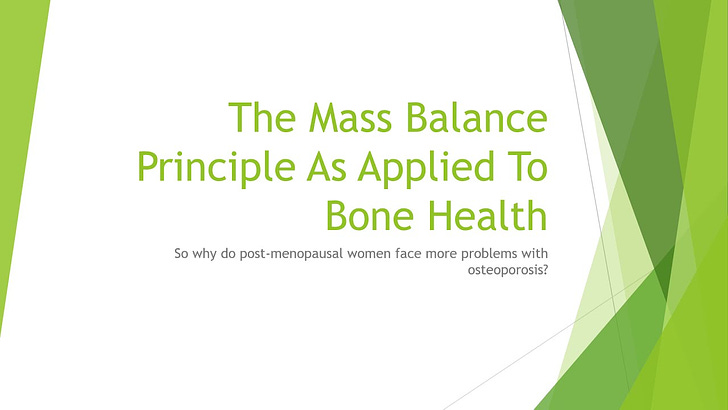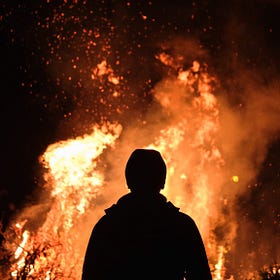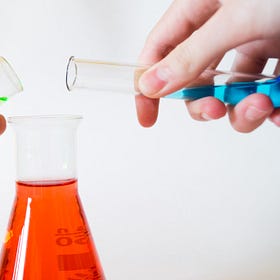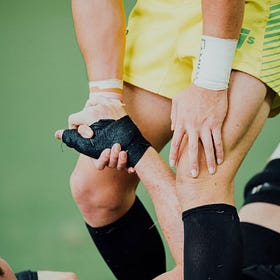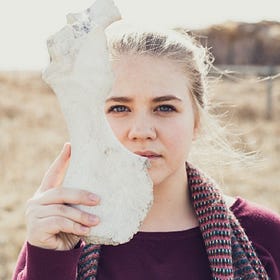How Osteoporosis Isn’t Just About A Calcium Deficiency
The dynamic equilibrium between bone formation and bone formation has a huge part to play.
The adult human body’s skeleton comprises 206 bones. They support our frame and our structure. We need them to stand up and walk. We need them to move about.
Sometimes, after a long, tiring day, we may collapse like a sack of potatoes on our couch and feel like we don’t have any bones left, even if they’re always there.
These bones are essential for our daily activities, but yet we don’t give that much thought to them because they’re hidden from plain sight — underneath multiple layers of skin cells and muscles.
But yet, things can happen to them as we age. We can be involved in accidents where we fracture our bones. We can’t see it, but we can surely feel the sensations of pain. The pain, the plaster cast/walking boot, and the inability to do certain things while recovering from the fracture can be extremely annoying.
The more insidious killer is osteoporosis. The bone structure remains intact externally, but internally, the support structure is being eroded. The density of the bone cells inside the bone is gradually being reduced, and that results in a weaker, more porous (hence “porosis”) bone structure.
The weakening of this bone structure does not bode well for older people, especially if they fall and fracture major bones in their hip or pelvic region.
Because much of the arterial blood flow through to our legs goes through the hip and pelvic regions, hence a fracture in that area can disrupt blood circulation and spell trouble for blood transport down to our lower limbs.
But how does the bone structure become porous in the first place?
There are 3 major types of bone cells: the osteoblasts, osteocytes and osteoclasts, which can be described as such:
OSTEOCLASTS are large cells that dissolve the bone. They come from the bone marrow and are related to white blood cells. They are formed from two or more cells that fuse together, so the osteoclasts usually have more than one nucleus. They are found on the surface of the bone mineral next to the dissolving bone.
OSTEOBLASTS are the cells that form new bone. They also come from the bone marrow and are related to structural cells. They have only one nucleus. Osteoblasts work in teams to build bone. They produce new bone called “osteoid” which is made of bone collagen and other protein. Then they control calcium and mineral deposition. They are found on the surface of the new bone.
When the team of osteoblasts has finished filling in a cavity, the cells become flat and look like pancakes. They line the surface of the bone. These old osteoblasts are also called LINING CELLS. They regulate passage of calcium into and out of the bone, and they respond to hormones by making special proteins that activate the osteoclasts.
OSTEOCYTES are cells inside the bone. They also come from osteoblasts. Some of the osteoblasts turn into osteocytes while the new bone is being formed, and the osteocytes then get surrounded by new bone. They are not isolated, however, because they send out long branches that connect to the other osteocytes. These cells can sense pressures or cracks in the bone and help to direct where osteoclasts will dissolve the bone.
Our bones are made up of living cells. We have osteoblasts that control calcium deposition in the bone, osteocytes that signal bone damage, and osteoclasts that eliminate damaged bone for osteoblasts to direct more calcium to the damaged areas to repair the damage.
The activity of these 3 cells are maintained at a healthy equilibrium for ensuring a healthy bone structure:
However, there are situations where this equilibrium can be disrupted, and one of the major contributing situations is this idea of mild chronic inflammation:
Inflammation — Like It Or Not, It’s Here To Stay.
It would suffice to say that the word “inflammation” is causing quite a stir these days. When we’re injured, for instance, the site of injury is experiencing acute inflammation, and that contributes to unpleasant sensations of pain and swelling that we can feel until the injury has been healed. Ditto, when we do catch a bout of the flu as well.
In mild chronic inflammation, the pro-inflammatory nuclear factor kappa B (NF-κB) transcription pathway is upregulated to signal the production of more inflammatory cytokines, such as tumour necrosis factor alpha (TNF-α) and interleukin 1β (IL-1β).
The problem, then, is the sequence of biochemical activities that follow:
NF-κB regulates osteoclast formation. An increased NF-κB activity will result in the formation of more osteoclast cells.
TNF-α increases the activity of NF-κB. In mild chronic inflammation, when more TNF-α is present, NF-κB activity is further intensified.
IL-1β promotes osteoclast activity.
So we see the presence of a vicious amplification loop — NF-κB stimulates the production of TNF-α, and TNF-α increases the activity of NF-κB to produce even more TNF-α. This loop does not end. It becomes a runaway reaction.
When osteoclast activity is increased to a point where it outweighs osteoblast activity, the equilibrium between bone formation and bone dissolving shifts to favour bone dissolving. As a result, more calcium goes back into the blood, the bone structure gets weakened, and the bone becomes more porous.
That’s the mechanism for osteoporosis right there.
And we know that women who have gone through menopause are at higher risk of developing osteoporosis. That’s because they were producing higher levels of estrogen hormones during their childbearing years. As they age and enter menopause, their production of estrogen is reduced, and the concentration of estrogen in their blood decreases over time.
Unfortunately, estrogen is a major regulator of NF-κB.
When there is less estrogen to regulate NF-κB, the propensity of NF-κB to become dysregulated is increased (of course, there are other ways to regulate NF-κB, such as the nuclear respiratory factor 2, or nrf2, pathway).
Antioxidant Protection In The Body Begins From Within The Cell.
Our body is constantly in a tug of war between reduction and oxidation (redox), which basically comprises multiple reactions where electrons are being transferred from one component to another.
NF-κB is also the pathway for the immune system to send out inflammatory signals for defensive stances against problems such as viral infections. Unfortunately, our lifestyle choices also do dictate how well our immune systems can regulate NF-κB activity. We don’t want its activity to overshoot.
If a woman’s lifestyle choices weren’t satisfactory, especially when it comes to sleepless nights, poor diet management and higher stress levels during the raising of her children, she would have a higher probability of developing osteoporosis as her estrogen levels go down.
Changing estrogen levels don’t affect men biologically as significantly as they affect women. However, aberrant NF-κB signalling can also affect men, and osteoporosis can be a symptom of that aberrant signalling. Hence, men can be prone to developing osteoporosis as they age too.
It isn’t just about inadequate calcium consumption.
Calcium consumption does help to provide the necessary nutrients for bone formation. However, it doesn’t really matter how much calcium one pumps into their diet with regards to osteoporosis.
If the osteoclast activity far outweighs osteoblast activity, there would still be more calcium dissolving out from the bone than calcium being deposited into the bone.
In fact, as our bones also do contain collagen proteins, MMP degradation of the collagen in our bones may also hasten the arrival of osteopenia or osteoporosis too. Not to mention osteoarthritis:
What Pain In The Joints Indicates For The Rest Of Our Body.
Osteoarthritis is a common issue that plagues most people who experience chronically painful joints that have lost a fraction of their original functions. We feel it as we age and as our bodies degenerate.
Do feel free to check out 9 Nutrients That Support Healthy Bone Development in the link below!
9 Nutrients That Support Healthy Bone Development
Supporting bone health is not an easy thing to do. We eat food. We exercise. We get stressed by work. We sleep. All these actions do contribute to the overall state of our immune system. I also do explore how the immune system affects the balance between our bone formation and bone dissolution rates at
Also, do feel free to share this article and hit the “subscribe” button to get more updates about the science concepts in nutrition and health, all deconstructed nicely for your convenient perusal!

